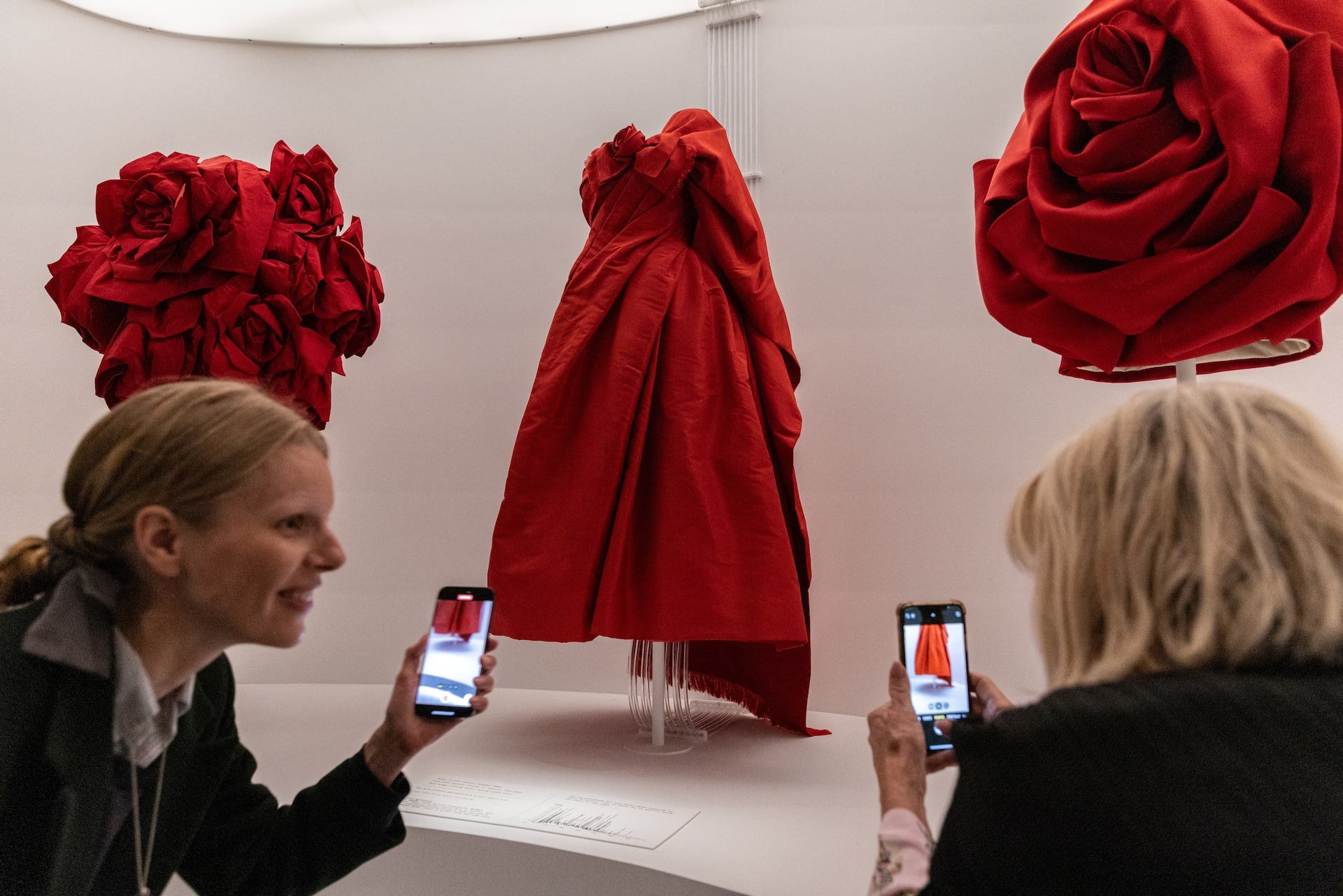Sleeping Beauties: Reawakening Fashion at The MET
A sensory exhibition of approximately 250 objects from the Museum’s collection through diverse technologies. Exhibition Dates: May 10–September 2, 2024
People walk past an ensemble of clothes during the press preview of the Costume Institute exhibit "Sleeping Beauties: Reawakening Fashion" at the Metropolitan Museum of Art in Manhattan in New York City, May 6. REUTERS/Jeenah Moon
Sleeping Beauties will bring to life objects from The Met collection by reactivating their sensory qualities and reengaging visitors’ sensorial perceptions through primary research, conservation analysis, and diverse technologies—from artificial intelligence and computer-generated imagery, to traditional formats of x-rays, video animation, light projection, and soundscapes. Approximately 250 garments and accessories spanning four centuries will be on view, visually connected by themes of nature, which serves as a metaphor for the cyclicity and ephemerality of fashion. Punctuating the show will be a series of “sleeping beauties”—garments that can no longer be dressed on mannequins due to their extreme fragility—that will be displayed in glass cases, allowing visitors to analyze their various states of deterioration as if under a microscope.
Upon entering the exhibition, visitors will discover a sequence of self-contained galleries organized into three sections focused around earth, air, and water. Presented as individual case studies, each gallery will explore a different theme inspired by nature, with historical fashions juxtaposed with contemporary counterparts in an immersive environment intended to engage a visitor’s sense of sight, smell, touch, and hearing.
One gallery will be arranged as a garden and will include a greenhouse displaying hats blooming with a variety of flowers and surrounded by subtle smellscapes that challenge visitors’ olfactory expectations. Designers will include Cristóbal Balenciaga, Hattie Carnegie, Lilly Daché, Hubert de Givenchy, Deirdre Hawken, Stephen Jones, Guy Laroche, Madame Pauline, Mainbocher, Elsa Schiaparelli, Sally Victor, and others. The gallery will also feature a coat by Jonathan Anderson for LOEWE, planted with oat, rye, and wheat grass that will start out alive and gradually die during the exhibition.
An evening dress with “hobble skirt” by Jeanne Hallée from 1913–14 will be brought to life using the Pepper’s ghost illusion technique, showing a woman in the design slowly evolving into an insect. Widely popularized by couturier Paul Poiret, the hobble skirt was critiqued by French caricaturist Georges Goursat, who likened its wearers to distorted insects due to their hunched posture and limited stride. Tight around the knees, the garment featured an elongated silhouette with a high, small bust and long draped skirt that narrowed to a point at the hem, forcing its wearer to walk with a clipped, mincing gait, or, to hobble. Hallée’s design epitomizes the segmented shape parodied by Goursat, as it features a gilded abdomen extending into a flared peplum over the hips.
Two examples of Charles James’s “Butterfly” ball gown—one in pristine condition, the other a “sleeping beauty” with extensive damage—will demonstrate a rare instance of duplicates in the collection. James both reflected and realized the butterfly’s ephemeral beauty in this design from 1955, comprising a narrow “chrysalis” sheath of pleated silk chiffon over a silk satin ground and an exuberant “winged” bustle skirt of nylon tulle. The “sleeping beauty” will lay bare the gown’s inherent vices: chiffon on the surface presents the most obvious damage, caused by both its construction and handling; and the volume of tulle on the back of the dress that places considerable weight on a relatively small area.
Visitors will be invited to feel the form and floral decoration of the “Mini Miss Dior” dress through an enhanced 3-D printed maquette and the rich embroidery of a 1615–20 waistcoat through an interactive embossed wallpaper. Additionally, select pieces will highlight the power harnessed in a garment’s aurality, such as a metal ensemble from Marni’s spring/summer 2024 collection and a dress comprised of razor clam shells from Alexander McQueen’s spring/summer 2001 collection—the sounds of which were isolated and recorded in an anechoic chamber.
Credits
The exhibition is organized by Andrew Bolton, Curator in Charge of The Costume Institute. Nick Knight is the Creative Consultant for the exhibition, with SHOWstudio developing and realizing the various technological activations. Exhibition design is by Leong Leong in collaboration with The Met’s Design Department. ST smell researcher and artist Sissel Tolaas will develop smells to accompany select objects in the show.
People take pictures of an ensemble of clothes during the press preview of the Costume Institute exhibit "Sleeping Beauties: Reawakening Fashion" at the Metropolitan Museum of Art in Manhattan in New York City, May 6. REUTERS/Jeenah Moon


